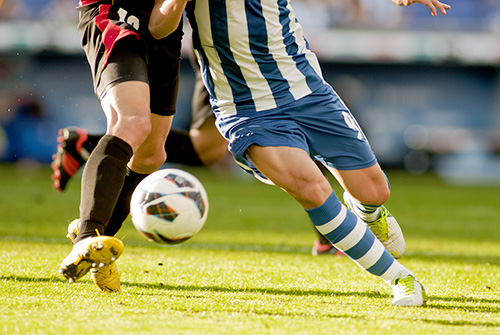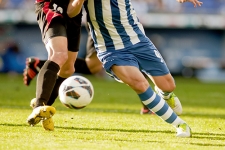For as high impact and collision prone of a sport as soccer is, the amount of protective gear worn by the players is pretty minimal. Shin guards, obviously, are paramount, because they protect the lower leg. In fact, it’s been shown time and again that a good portion of the lower leg injuries that occur in soccer are due to inadequate shin guards. Aside from mouth guards and the occasional lightly padded gear that goal keepers often wear to protect themselves from obscene amounts of turf burn, shin guards are pretty much “it” when it comes to protective gear and soccer players.

A good portion of soccer related ailments tend to be soft tissue injuries. It’s estimated that between 50-75% of all soccer injuries affect the feet and legs, with just under half of those injuries involving the ankles and feet. Roughly one quarter of all soccer-related lower extremity injuries involve the ACL (anterior cruciate ligament) and, as such, is the most common season-ending injury sustained by soccer players. When it comes to knees, meniscus tears are also relatively common due to the amount of pivoting that occurs in the sport.
Goalkeepers are also at an elevated risk for sustaining shoulder injuries, due to the amount of falls, dives, and collisions that keepers sustain in games. Therefore, special attention should be given to ensuring that goalkeepers are diving and landing the correct way whenever possible (in the soccer world there is separate and specialized training for goalkeeping coaches that address these exact issues and scenarios). However, it should be noted that even field players can suffer from a rotator cuff injury, most often due to throw-ins and falls.
If you’ve got a soccer player who has sustained an injury, make sure to seek prompt medical treatment. Here at Prairie Orthopaedic and Plastic Surgery, we have orthopaedic surgeons who specialize in treatment of upper extremity injuries, as well as knee injuries and foot and ankle injuries. Don’t hesitate to give us a call – we’re happy to help!
source: aaos.org

